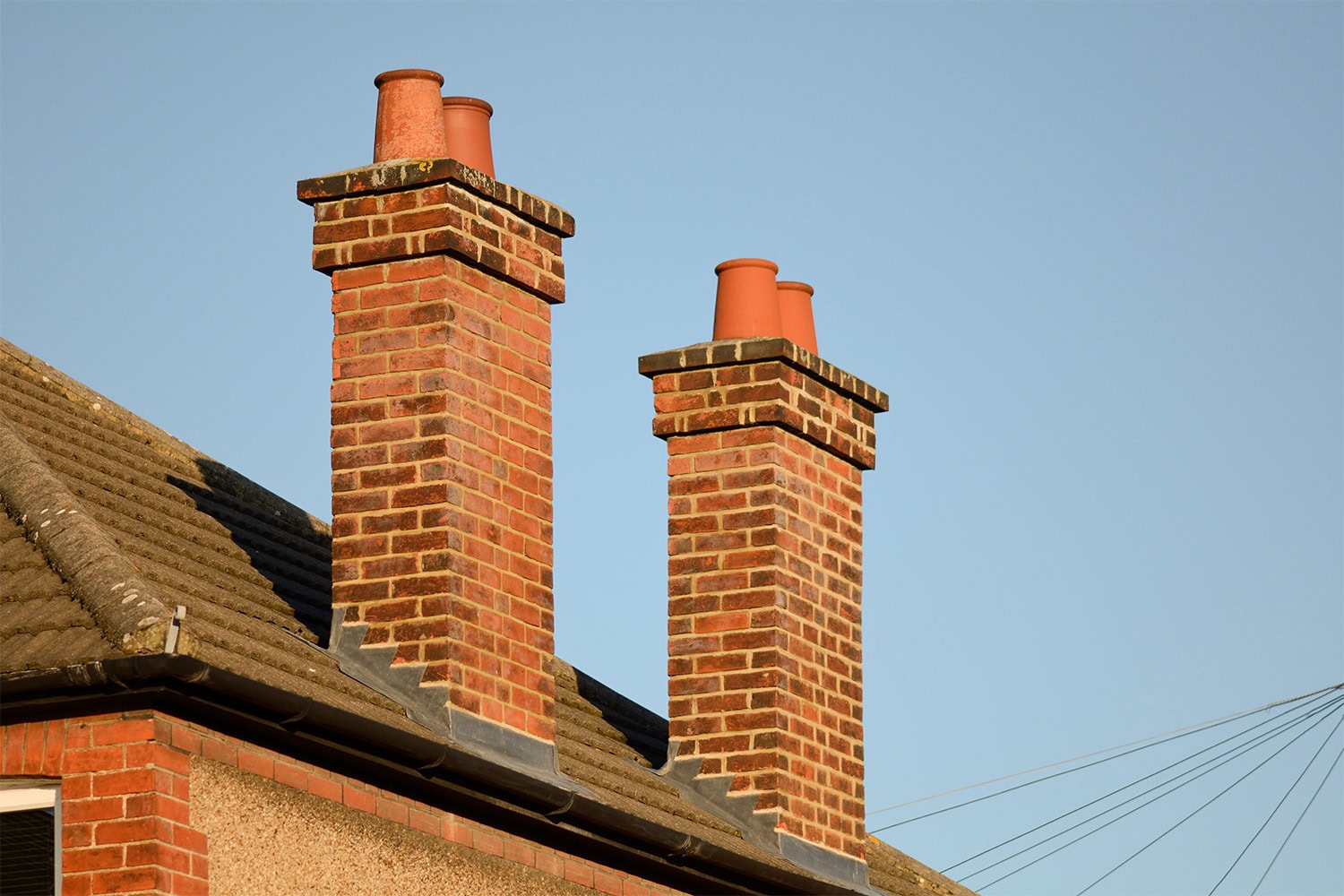Chimneys, Damp and Missed Clues: Why These Relics Still Matter
What Your Surveyor Looks for When Chimneys Are Still in Place – and Why It Matters
Many buyers today don’t give chimneys a second thought. Often redundant, these features are seen as charming period details or completely overlooked in modern living. However, chimneys – even those no longer in use – can still be a major source of defects and internal dampness, particularly in older homes.
As surveyors, we routinely inspect chimney stacks and associated internal areas because they remain one of the most common locations for water ingress, structural movement and concealed decay.
What are the risks?
Chimneys are exposed to all weathers, standing proud above the roofline where they take the full force of wind, rain and frost. Over time, mortar joints can deteriorate, flaunching can crack, and flashings can lift or corrode. These defects allow water to penetrate down into the property.
Internally, the signs are often subtle at first: staining on chimney breasts, bubbling paintwork, or a musty smell in unused rooms. In many cases, we find damp issues that originate from chimneys, even when they’ve been sealed off or are no longer functional. Redundant flues that haven’t been vented correctly can also trap moisture, leading to condensation and mould.
Structural concerns are another key issue. Chimney stacks are heavy, and if foundations are inadequate or if the stack has suffered from long-term weathering, cracking or leaning may occur. This not only affects aesthetics but can also create safety concerns and costly repair obligations.
Case Study: Internal Damp That Wasn’t What It Seemed
We were recently instructed to carry out a Level 3 Building Survey on a detached Victorian property in Nottinghamshire. The buyer had viewed the home several times and raised concerns about damp patches in the first-floor bedroom. They informed us that the sellers had redecorated prior to putting the property on the market.
Our investigation revealed the true source: water was penetrating through a weathered chimney stack. The lead flashing had failed, and there were open mortar joints on the rear elevation. Internally, the redundant flue had been sealed without appropriate ventilation. As a result, moisture had built up within the structure, leading to trapped condensation and dampness that would have worsened over time.
Repairs were costed at around £3,500, including scaffolding, external repairs and internal plastering. The survey findings gave the buyer confidence to proceed with a renegotiated offer and a clear plan for future maintenance.
Why You Need More Than a Quick Look
It’s easy to focus on layout, décor and location when buying a home – and rightly so. But chimneys, while often considered an architectural afterthought, can harbour issues that are complex and expensive to fix. These problems are rarely obvious to buyers, especially in well-presented homes.
At Bramble & Wagg, we carry out detailed, impartial home surveys that take the time to explore these overlooked areas. We know where to look, what to look for, and how to identify problems before they become major expenses. Our reports are clear, thorough, and supported by photographic evidence. If needed, we’re also available for follow-up conversations to help you make informed decisions with confidence.
Let us focus on the bricks and mortar – so you can concentrate on whether the property feels like home.
Book your RICS Home Survey today or get in touch to discuss your next move. We’re here to help you buy with clarity and confidence.







